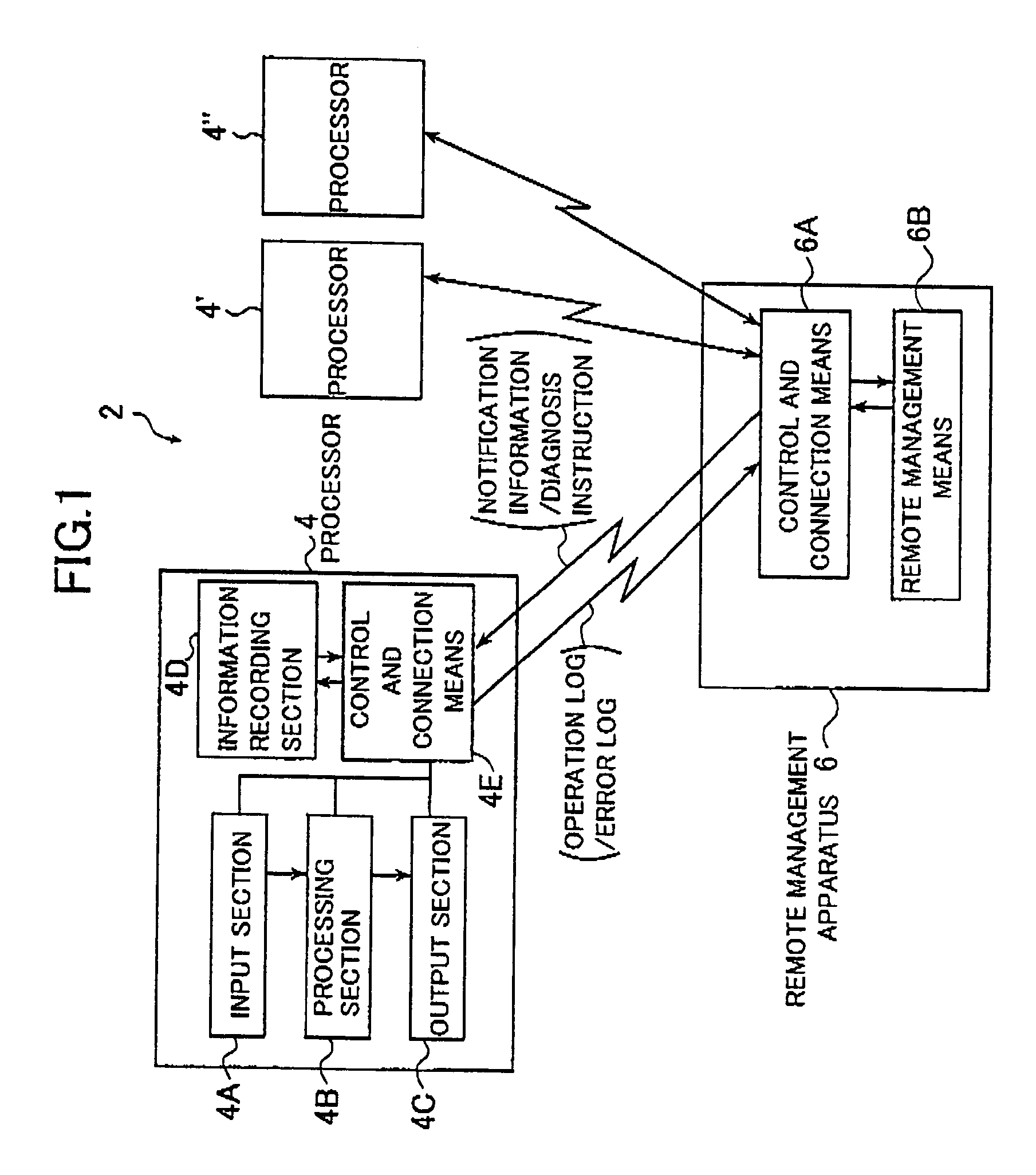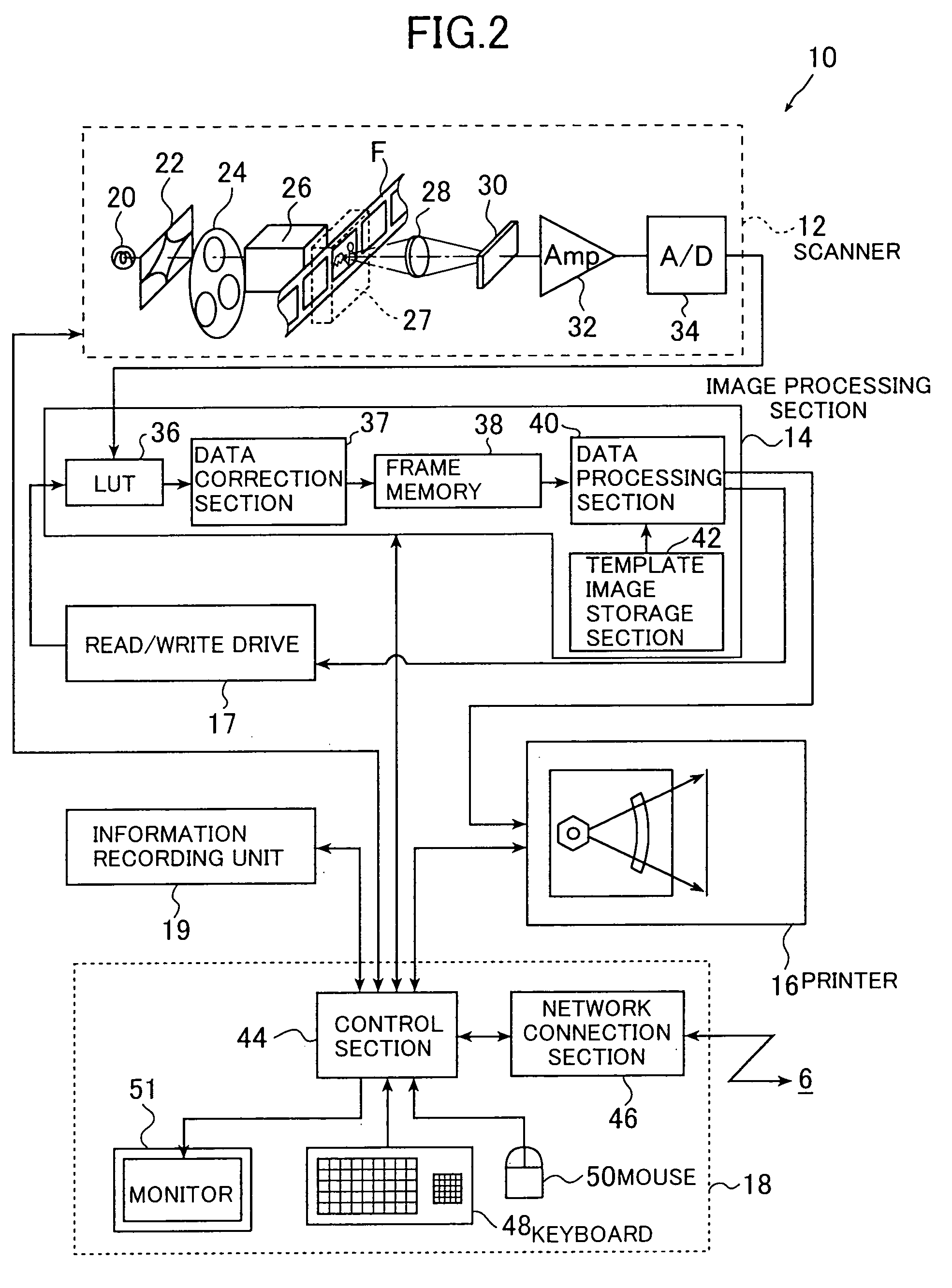However, such life / consumption cycle management is basically a user's or operator's task and has not been suitably practiced.
Also, there is no unified management method for it.
However, the time and labor required for repair, fixing and replacement in such a situation are considerable time and economical losses to a user, i.e., the operator and to the service
branch working for maintenance of the image output apparatus.
These arts, however, are not helpful in predicting life and wear or breakage of components or deficiency of a consumable material and are not effective in suitable life / consumption cycle management.
This system, however, is designed to examine the cause of an
abnormality only when the
abnormality is detected, and is incapable of preventing occurrence of abnormalities or management with respect to abnormalities.
Similar life / consumption cycle management concerned with occurrence of abnormalities in various
image processing apparatuses and other widely-used processors which need to be checked with respect to the life of components and the used state of consumable items have the same problems.
In the above-described digital photoprinter, there is a possibility of outputting a defective image inclined, deformed, having large variation in
image density or
color tone, for example.
Such a defective output image may result from a mechanical cause, such as degradation of a developing solution used in development processing performed in the printer, a change in quality or in amount with time of some consumable material, damage to some component, an error in an operation performed by an operator, an error in setting various processing conditions, including
image processing conditions, a setting error with respect to different kinds of
photographic printing paper of prints, a change of an environment in which the digital photoprinter is installed, a change in operating conditions, or a complicated combination of these factors.
However, there are various factors relating to occurrence of a defective output image, as described above.
It is thus difficult for the operator to determine the cause.
In most cases, the operator cannot suitably remedy the
machine and usually fails to output good images.
However, if the defective output image has a defect in
image quality, the operator can only use an abstract expression, e.g., “the image is blurred” or “the image is coarse” to describe the state of the defective output image, and it is difficult for the operator to suitably inform a serviceperson of the state of the defective output image.
The serviceperson cannot correctly grasp the state of the defective output image and the operator spends a long time to obtain a suitable instruction from the serviceperson.
The time and labor required for repair and fixing in such a situation are considerable time and economical losses to the operator-user and to the service
branch working for maintenance of the image output apparatus.
In this diagnosis process, however, the service center is only informed of the output image data and information on circumstances under which the defective image is outputted, so that it is not possible to determine details of the cause of occurrence of the defective image.
These methods perform diagnosis of the apparatus by using an output image obtained from a
reference image without using a defective output image itself, and do not determine the cause of occurrence of the defective output image itself.
Therefore, these methods are ineffective in designating suitable fixing steps on the basis of a defective output image.
This apparatus or system, however, cannot determine the cause of occurrence of a defective output image and cannot designate suitable fixing steps.
 Login to View More
Login to View More  Login to View More
Login to View More 


